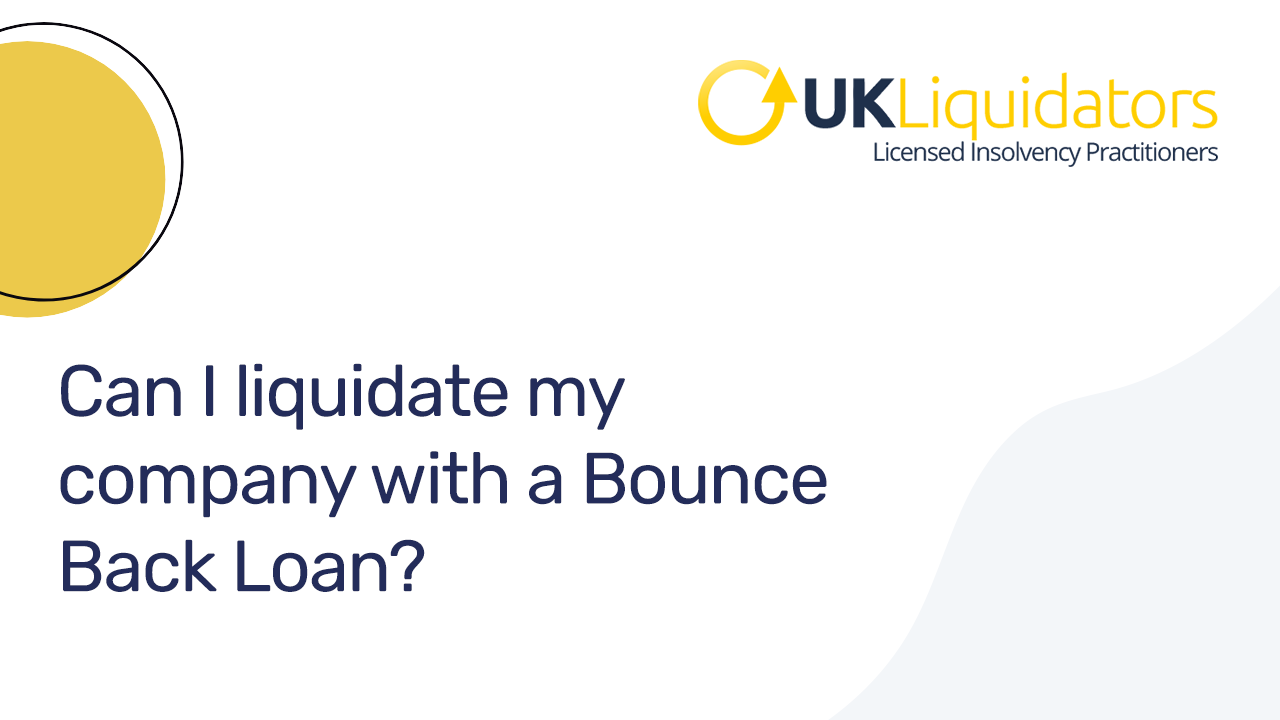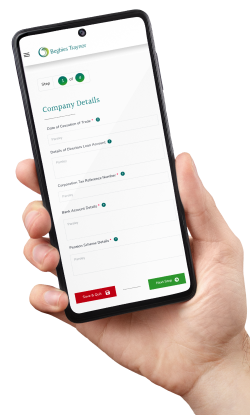Bounce Back Loans were a government-backed loans scheme introduced as part of the Covid-19 pandemic, which allowed all eligible businesses to take out borrowing of up to £50,000 without having to provide a personal guarantee.
While Bounce Back Loans were a lifeline to companies at the time, many are now discovering that these repayments are stretching their cash flow to breaking point. If you are in this position, you may be wondering where you stand and what the implications are if you cannot pay your Bounce Back Loan.

A 12-month payment holiday was automatically applied to the Bounce Back Loan when it was taken out, however, once this ended, it was the borrowing company’s responsibility for ensuring the loan was repaid as per the initial agreement.
The problem, however, is that when companies first took out their Bounce Back Loan, the future situation was unclear, meaning that while these loans may have been taken out in good faith, some businesses are now finding themselves simply unable to repay what is due.
Concerned about the National Insurance increase?
For the 2024-25 tax year, the rate of employer National Insurance increases from 13.8% to 15% adding yet more pressure onto already squeezed cash flows. If you are worried about the impact this could have on your company’s finances, talk to the experts at UK Liquidators. As licensed insolvency practitioners we can explain your options and help you plot a way forward. Call today on 0800 063 9262.
If your company is unable to pay the Bounce Back Loan, one of the main questions you are likely to have is how will this non-payment affect your company and also yourself as an individual.
Well, the good news is that as a director, you will not be held personally liable for repaying the Bounce Back Loan if your company is unable to do so. One of the main benefits of the Bounce Back Loan was that the government provided the banks with 100% security for the money they lent.
This meant that no personal guarantee had to be provided to secure the borrowing. Instead, if the company is not able to repay the money owed on the Bounce Back Loan, the bank will turn to the government for repayment rather than the company director themselves.
While this security should provide some comfort to company directors, you should be aware that this government guarantee will only come into effect if the company becomes insolvent and enters into a formal liquidation process. While your company is still trading and is an active company on Companies House, your company remains fully responsible for making the monthly repayments towards the Bounce Back Loan.
Liquidation Portal
For Company Directors

If you believe your company is still a profitable business but it is simply struggling to repay its Bounce Back Loan and other company debts, you can consider a range of restructuring and refinancing options that could help ease your cash flow in the immediate future.
For many, the Bounce Back Loan will be one of several debts the company is holding. If this is the case, you can look at entering into negotiations with your other creditors in order to lower your monthly outgoings to a more affordable level.
For those who are juggling a number of loans, credit cards, and supplier debts, a formal process known as a Company Voluntary Arrangement (CVA) may be more appropriate. A CVA allows you to make just one monthly payment which will be divided between a number of your company's creditors for a period of time typically 3-5 years.
A CVA can only be entered into under the guidance of a licensed insolvency practitioner, and once all creditors agree to the terms, the agreement becomes legally-binding on all parties. This provides you with long-term certainty over your debt, however, you must be able to prove that your business is viable as an ongoing entity before creditors will give their consent to the proposal.
For the purposes of liquidation, a Bounce Back Loan is treated in the same way as any loan or finance agreement. This means that should the company become insolvent and needs to enter a formal liquidation process, the Bounce Back Loan will be included in the liquidation and any amount which cannot be repaid using company assets will be written off.
The liquidation of an insolvent company can be done in one of two ways. The first is to wait for a creditor to force the company into compulsory liquidation; this requires a court order and can be a lengthy process. The other option, is for directors to initiate the liquidation of their company themselves. This is done through a Creditors' Voluntary Liquidation (CVL).
A licensed insolvency practitioner will be appointed to handle the entire process, including identifying company assets, selling these for the benefit of creditors, before distributing the proceeds according to a set hierarchy as laid out in the Insolvency Act 1986.
The end result of the liquidation is that the company will cease to exist as a legal entity, and any debt which remains after this point will be written off unless this has previously been secured with a personal guarantee. This includes the Bounce Back Loan. As this type of borrowing did not require the security of a personal guarantee, you will not be held personally liable for repaying these funds so long as you have used them in an appropriate manner.
Start your online liquidation today
If you have decided liquidation is the right option for your limited company, you can take the first step and begin the process online using our online portal. Starting the process is quick, simple, and can be done at a time that suits you. Your information will be submitted to your local UK Liquidators insolvency practitioner who will be with you every step of the way. Click here to start your company’s liquidation online.
When Bounce Back Loans were launched, they were done so in order to provide as much help to as many businesses as possible. As every company was facing its own challenges at the time, the rules simply stated that the loan must be used to provide an economic benefit to the business.
For some, this could have been used to improve working capital, to purchase machinery, equipment or stock, for modifications to allow the business to adapt to its changing landscape, or to supplement staff wages. The main criterion was that the Bounce Back Loan was to be used within the business; it was not meant for personal use. Those found guilty of misusing their Bounce Back Loan could be held personally liable for repaying them should the company be unable to do so.
If your company is experiencing financial difficulties and you are in any doubt as to whether you may have misused your Bounce Back Loan, you should make it a priority to seek expert help and advice. UK Liquidators have over 100 fully qualified and highly experienced licensed insolvency practitioners who will be able to evaluate the position of your company and help you understand your options. They will also be able to talk you through the possible personal ramifications of liquidating the company if you have an outstanding Bounce Back Loan that you have used inappropriately.
Call our expert team today for help and advice on repaying your Bounce Back Loan on 0800 063 0495.
By completing the test, you will receive:
If you are considering liquidation for your company, taking expert advice at an early stage is crucial. At UK Liquidators, our team of licensed insolvency practitioners are committed to providing limited company directors with the help and advice they need to make an informed decision.




Looking for immediate support?
Complete the below to get in touch